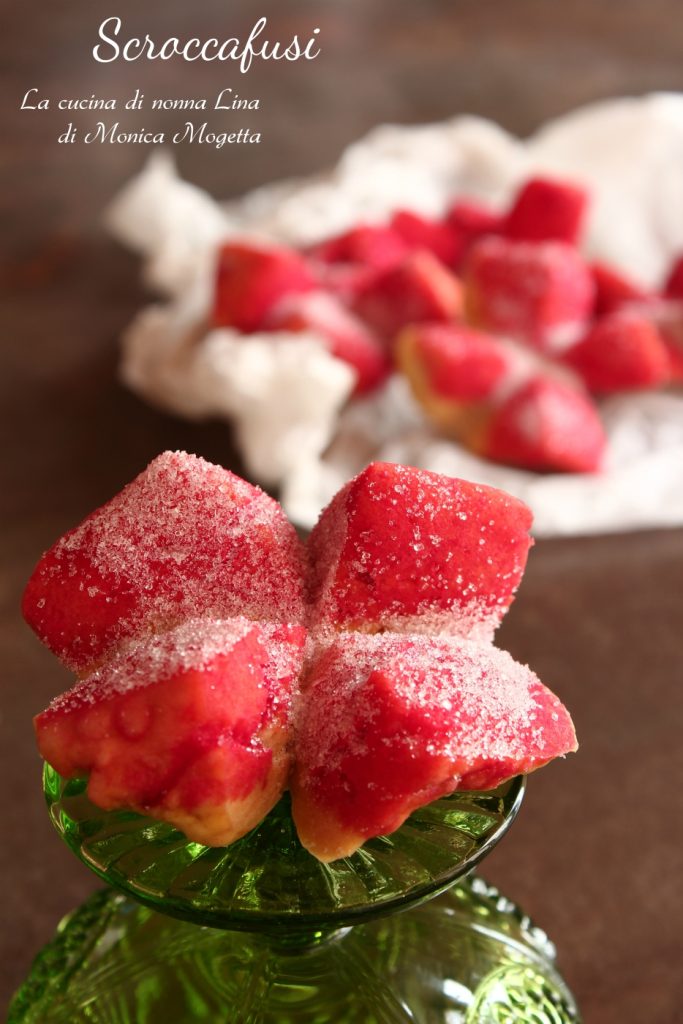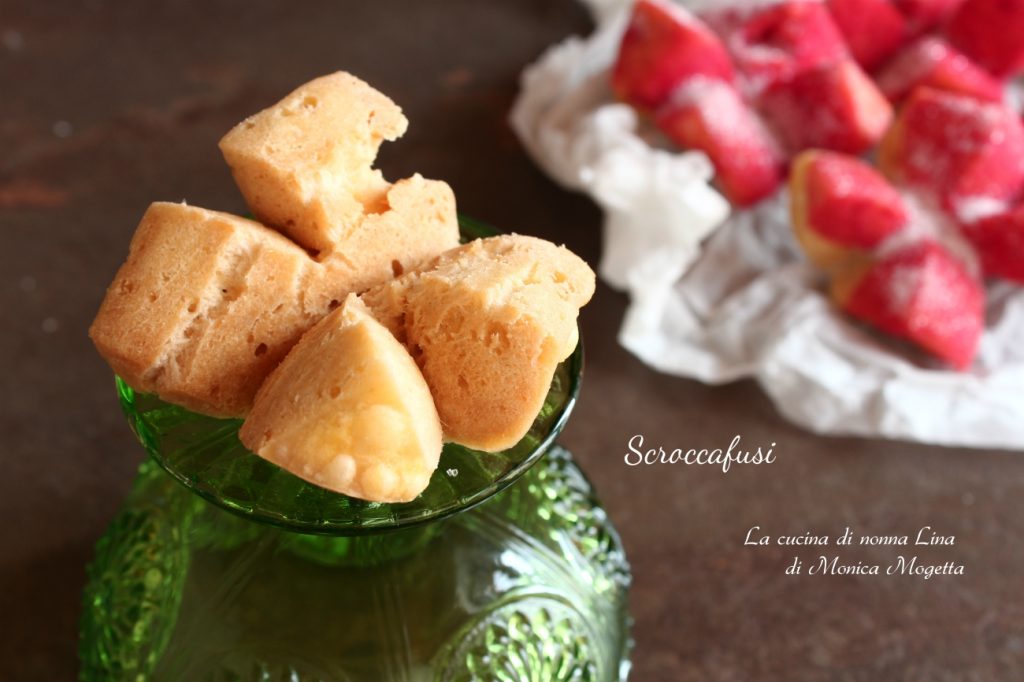Today I present to you one of the typical carnival recipes from the Marche region: Scroccafusi! They are one of the most delicious sweets that exist. They have a double cooking process, being boiled and then fried afterwards, requiring some work but I assure you they are truly delicious! I remember as a child helping my grandma fry them, only frying them because they are the only sweet Grandma Lina didn’t make entirely homemade but took the pre-boiled sticks and just had to cut and fry them, then after trying it myself, I understood why given the somewhat laborious process! But now let’s get on with making the scroccafusi, believe me, they are easier to make than to read! TRADITIONAL MARCHIGIANA SCROCCAFUSI RECIPE (in the recipe, rest and cooking times are indicative because they have a double cooking process (boiling + frying), instructions will be explained step by step)
Other Marchigiana carnival recipes:

- Difficulty: Medium
- Cost: Economical
- Rest time: 4 Hours
- Preparation time: 20 Minutes
- Portions: 18 scroccafusi
- Cooking methods: Boiling, Frying
- Cuisine: Italian
- Seasonality: Carnival
Ingredients for Traditional Marchigiana Scroccafusi (dough)
- 4 Small eggs
- 2 tablespoons Sugar
- 3 tablespoons Extra virgin olive oil
- 3 tablespoons Mistrà (anise liqueur)
- 3.5 cups All-purpose flour
- 1 Pharmacy yeast dose for 4 eggs
- Plenty of water (for boiling scroccafusi)
- Plenty of oil for frying (I use peanut oil)
- Alchermes (enough to soak well)
- Sugar (enough to cover the surface)
Useful tools for making Traditional Marchigiana Scroccafusi
- 1 Bowl
- 1 Spoon
- 1 Pastry board
- 1 Pot
- 1 Pan
- 1 Slotted spoon
- 1 Food scale
- 1 Dish towel
Preparation of scroccafusi (dough and first cooking)
In a bowl, work the eggs with the sugar, mistrà, and oil until you get a frothy mixture.
Add now the flour mixed with pharmacy yeast and with the help of the spoon start mixing, when you see that the mixture is not sticky, work it for about 15 minutes on the floured pastry board.
Once you have obtained a firm and smooth dough, make 6 sticks about 12 inches each.
Put a large pot with plenty of water on the fire at high heat, when it comes to a boil lower the heat to the minimum (the water should slightly simmer), now boil two sticks at a time, put them in water, stir continuously (to prevent them from sticking and boil for about 8/10 minutes.
Once the sticks are boiled, place them on a clean cotton dish towel and cover them, let them rest covered for at least 4 hours.
Heat the oil in a pan over medium-low heat.
Cut each stick into 3 pieces of about 4 inches each, make an incision on each piece with an x (without going all the way through!) starting from the top left side and ending on the bottom right side and vice versa.
When the oil is hot and ready (you can check it by briefly inserting a toothpick and if bubbles form around it, it’s ready) dip (a maximum of 4 at a time) the scroccafusi in the pan with the cut facing downwards.
Turn the scroccafusi frequently (help yourself with a spoon and slotted spoon) until they turn a beautiful golden color, then drain them and let them rest on paper towels or frying paper until they cool down.
Once the scroccafusi are cold, prepare a bowl with plenty of alchermes and dip the scroccafusi almost entirely (I leave only the bottom part “in white”), place them on a tray and while they are still wet generously sprinkle them with granulated sugar! And voilà, now you just have to let them rest a few minutes and then enjoy them!
Traditionally, Scroccafusi are red with alchermes and sugar coating, but if you don’t like alchermes, they can be left white (as in the photo) and covered with a barely warmed honey drizzle.

Useful Information
You can store the scroccafusi on a tray covered with paper like the one used for bread bags. The pharmacy yeast is fantastic because, unlike other yeasts, it is dosed based on the eggs, which is something I love! If you try them, leave me a comment! If you have any doubts about the procedure, cooking, or anything else, contact me on the blog or my social channels listed below!
Acknowledgments
A special thanks to my grandma Lina for passing on the passion for cooking and for introducing me to so many amazing recipes as a child! Finally, thanks also to the pharmacist for the patience shown when seeing me ask for different doses of yeast for different quantities of eggs until hitting the ideal dose!

